Recent Posts
Safeguarding Spaces: A Guide to Home Ventilation for Fire Hazard Reduction
4/22/2024 (Permalink)
Creating a safe and secure living environment involves more than just aesthetic considerations; it requires a proactive approach to minimizing potential fire hazards. Adequate home ventilation plays a pivotal role in achieving this goal. In this blog, we'll explore practical strategies for properly ventilating your home to reduce fire hazards.
Install Exhaust Fans
Incorporate exhaust fans in areas prone to heat and moisture, such as kitchens and bathrooms. These fans efficiently remove excess heat, preventing the buildup of combustible elements and reducing the risk of fire hazards.
Optimize natural ventilation by strategically placing windows to encourage cross-ventilation. Allowing fresh air to circulate throughout your home helps disperse potential combustible elements, minimizing fire risks.
Regular HVAC Maintenance
Keep your heating, ventilation, and air conditioning (HVAC) systems in optimal condition through regular maintenance. Clean filters, clear vents, and inspect ducts to ensure these systems operate efficiently, reducing the likelihood of overheating and fire hazards.
Implement proper attic ventilation to prevent the buildup of heat in this often-neglected space. Consider installing ridge vents, gable vents, or soffit vents to promote airflow and reduce the risk of potential fire hazards.
Use Fire-Resistant Building Materials
Choose construction materials with fire-resistant properties, especially for exterior components. Fire-resistant siding, roofing, and vents can provide an added layer of protection against potential external fire hazards.
Regularly inspect and clear vents, chimneys, and flues of any debris, leaves, or other obstructions. Blocked vents can hinder proper ventilation and increase the risk of fire hazards, particularly in heating systems.
Outdoor Appliances Safety
Keep outdoor appliances, such as grills and fire pits, at a safe distance from your home and other flammable structures. Adequate spacing reduces the risk of radiant heat and sparks reaching vulnerable areas.
Ensure that appliances generating heat, like stoves and ovens, are properly ventilated. Range hoods and exhaust fans can help eliminate heat and gases, minimizing the risk of internal fire hazards.
Mindful Landscaping
Be mindful of landscaping around your home. Create a defensible space by clearing away vegetation and leaves, reducing the risk of external fires spreading and minimizing potential fire hazards.
Foster a culture of fire safety within your household. Educate family members about the importance of proper ventilation and the role it plays in reducing fire hazards. Awareness contributes to a collective effort in maintaining a safe living environment.
Proper home ventilation is a practical and effective means of reducing fire hazards. By implementing strategies such as exhaust fans, strategic window placement, and fire-resistant materials, homeowners can contribute to a safer living space. A proactive approach to home ventilation ensures that your home remains a haven, minimizing the risk of fire hazards and providing peace of mind for you and your loved ones.
Expert Techniques for Disinfecting After Water Damage
3/13/2024 (Permalink)
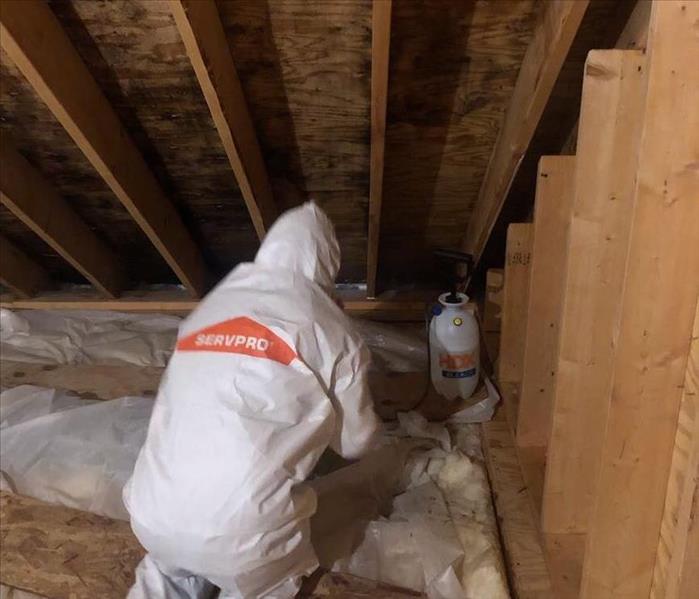 Experts, such as our SERVPRO of The Seacoast team, have the knowledge, equipment, and experience to thoroughly sanitize and disinfect your property.
Experts, such as our SERVPRO of The Seacoast team, have the knowledge, equipment, and experience to thoroughly sanitize and disinfect your property.
Water damage not only wreaks havoc on your property but also poses serious risks due to potential bacterial and mold growth. Proper sanitization and disinfection are critical steps in restoring a safe and healthy environment after water damage. Here's a comprehensive guide on how to properly sanitize and disinfect after water damage:
1. Safety First
Before starting the sanitization process, prioritize safety. Wear protective gear such as gloves, goggles, and a mask to prevent direct contact with contaminated water or surfaces.
2. Remove Excess Water
Begin by removing excess water from affected areas. Use pumps, wet/dry vacuums, or towels to extract as much water as possible. This step is crucial in preventing further water absorption and reducing moisture levels.
3. Clean Surfaces
Thoroughly clean all surfaces affected by water damage using a mild detergent or soap and clean water. Scrub gently to remove dirt, debris, and visible contaminants. For hard surfaces, a mixture of warm water and a mild cleaner works effectively.
4. Disinfecting Surfaces
After cleaning, use a disinfectant solution to kill bacteria, viruses, and mold spores. Common disinfectants like bleach solutions or commercial disinfectants are effective. Apply the solution generously to affected areas and allow it to sit for the recommended time before wiping or drying.
5. Target Mold Growth
Areas prone to mold growth should receive extra attention. Apply a mold-specific cleaner or a mixture of water and vinegar to affected surfaces to inhibit mold growth. Allow the solution to sit for several minutes before wiping or rinsing.
6. Address Porous Materials
Porous materials like carpeting, upholstery, and drywall may require specialized treatment. Consider professional cleaning or replacement of extensively water-damaged porous items to ensure thorough disinfection.
7. Ventilation
Promote airflow and ventilation in the affected area to aid in the drying process and prevent the resurgence of mold and bacteria. Open windows, use fans, and dehumidifiers to expedite drying and maintain a dry environment.
8. Regular Monitoring
Continue to monitor the sanitized areas regularly to ensure they remain dry and free of mold or bacterial growth. Conduct periodic checks to prevent potential issues from escalating.
9. Seek Professional Help
In severe cases or if uncertain about the effectiveness of DIY disinfection, consider hiring professional water damage restoration services. Experts, such as our SERVPRO of The Seacoast team, have the knowledge, equipment, and experience to thoroughly sanitize and disinfect your property.
By following these expert steps for sanitizing and disinfecting after water damage, you can effectively eliminate harmful contaminants, mitigate risks, and restore a safe and healthy environment in your home or property. Remember, prompt action and proper techniques are key to successful sanitization and disinfection after water damage!
Repairing Water-Damaged Walls: A Step-by-Step Guide by SERVPRO®
2/14/2024 (Permalink)
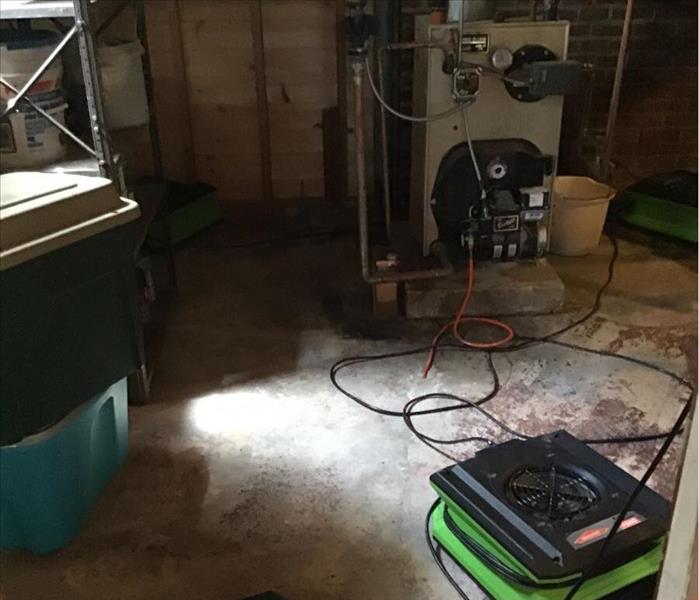 Repairing water-damaged walls demands precision and proper techniques to ensure a seamless restoration process.
Repairing water-damaged walls demands precision and proper techniques to ensure a seamless restoration process.
Water damage can take a toll on your home's walls, leading to unsightly stains, deterioration, and potential structural issues if left unaddressed. Repairing water-damaged walls requires quick action and the right techniques to restore them to their pre-damage condition. Here's a comprehensive guide to repairing water-damaged walls:
Assessment and Safety Precautions
Start by assessing the extent of the water damage. Ensure safety by turning off electricity in affected areas to avoid potential hazards.
Identify the Type of Wall Material
Different wall materials (drywall, plaster, or paneling) require distinct repair approaches. Identify the wall material before initiating repairs.
Remove Damaged Sections
For severely damaged drywall, carefully cut out the affected sections using a utility knife or saw. Ensure clean, straight edges for easier patching.
Dry Out the Area
Thoroughly dry the affected area using fans, dehumidifiers, and proper ventilation to prevent mold growth before proceeding with repairs.
Repairing Drywall
For small holes or cracks, use joint compound or spackling paste to fill the damaged areas. Sand the surface after the compound dries for a smooth finish.
Replacing Damaged Drywall
If large sections of drywall are damaged, cut out the affected area and install a new piece. Secure it with screws, tape the seams, and apply joint compound.
Restoring Plaster Walls
Repair small cracks in plaster walls using patching plaster or joint compound. Larger damage might require professional expertise to restore properly.
Painting and Finishing
Once repairs are complete and dry, sand the patched areas, prime the surface, and repaint the walls to match the existing color and texture.
Preventing Future Water Damage
Address the root cause of water damage, such as leaks or moisture sources, to prevent recurrence. Consider waterproofing solutions for vulnerable areas.
Professional Assistance if Needed
In cases of extensive damage or uncertainty in repairs, consult with water damage restoration professionals like SERVPRO of The Seacoast for expert guidance and assistance.
Repairing water-damaged walls demands precision and proper techniques to ensure a seamless restoration process. Timely and meticulous repairs can prevent further deterioration and restore the aesthetics and structural integrity of your home. Contact our SERVPRO® team for professional guidance and restoration services tailored to repair water-damaged walls.
How to Prepare Your Home for New Hampshire Weather
1/17/2024 (Permalink)
Have you heard the saying, "If you don't like the weather, wait a minute," well that couldn't ring more true for our region? With dramatic shifts in weather patterns, from sunny skies to sudden snowstorms, preparing your home for the fluctuating New Hampshire climate is crucial. Here at SERVPRO® of The Seacoast, we bring you a comprehensive guide to protect your dwelling.
1. Reinforce Home Insulation
Owing to the chilly New Hampshire winters, efficient home insulation is imperative. Not only does it maintain a warm and comfortable interior atmosphere, but it also reduces energy consumption. Don't forget to insulate your loft, and wall cavities, and seal off drafts around windows and doors.
2. Schedule Regular Roof Inspections
Given the heavy snowfall and occasional hailstorms New Hampshire faces, regular roof inspections can preempt leakages or collapse. This preventive measure is crucial in the early detection and repair of any weaknesses or damages.
3. Invest in Storm-Proof Windows
The region can experience brutal winter storms and hurricanes. Investing in heavy-duty, storm-proof windows can stand against high winds and flying objects.
4. Clear out Gutters and Downspouts
Fall in New Hampshire is synonymous with falling leaves, which can clog your gutters and downspouts. Regular cleaning can prevent water buildup and icicles during winter.
5. Protect Your Plumbing
As temperatures plunge, unprotected pipes can freeze and eventually burst, causing significant water damage. To avoid this, insulate your pipes and allow faucets to drip slightly to keep water flowing.
6. Have a Backup Generator
Frequent storms often leave residences without power. Having a backup generator can ensure uninterrupted power supply, safety, and comfort for your family.
7. Keep the SERVPRO® number handy
Despite all preparations, if your home still falls victim to the unpredictable New Hampshire weather, be sure to have our number readily available. Our professional damage restoration services operate round the clock, ready to respond swiftly to get your home back to normal.
Preparing for New Hampshire’s changing weather is no easy task. However, our checklist benefits homeowners to make well-informed decisions regarding home maintenance in this diverse climate. While we can't control the weather, we can certainly equip our homes to withstand it.
Remember, no matter the unanticipated weather challenge, SERVPRO of The Seacoast is always 'Faster to any size disaster', enabling your life to get back to normal as quickly as possible.
The Importance of Cleaning Your Furniture After a House Fire
12/15/2023 (Permalink)
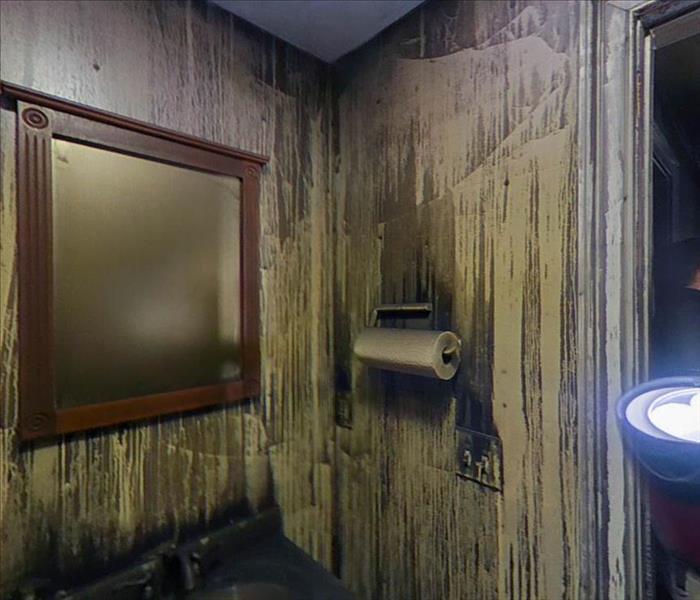 Cleaning your upholstery after a house fire is not just about your safety and comfort.
Cleaning your upholstery after a house fire is not just about your safety and comfort.
In the wake of a house fire, the immediate concerns revolve around the safety of your loved ones and the recovery of cherished possessions. While it's natural to concentrate on structural damage and irreplaceable keepsakes, the importance of cleaning your upholstery should not be underestimated. In this blog, we will delve into the significance of cleaning upholstery after a house fire, offering invaluable insights to guide you through the restoration process.
Understanding the Consequences
Smoke and Soot Residue
When a fire engulfs your home, it produces smoke and soot, which can infiltrate every nook and cranny, including your upholstered furniture. Smoke contains a mixture of harmful chemicals, including carbon monoxide, as well as tiny particulate matter. If left unaddressed, these residues can pose serious risks.
Lingering Odors
The acrid, smoky smell that lingers in your upholstery isn't just unpleasant; it can also be a hazard. They can also permeate your clothing and other belongings, making the unpleasant aftermath of a house fire an everyday nuisance.
Aesthetic Appeal
Soot and smoke residues can permanently stain your upholstery, making it not only unsightly but also decreasing the overall value of your furnishings.
The Cleaning Process
Now that we've discussed why it's crucial to clean upholstery post-fire, let's explore the cleaning process and what you can do:
Assess the Damage
It's essential to perform a thorough assessment of the damage your upholstery has suffered. Different materials and fabrics may require specific treatment. Understanding the extent of the damage will guide you in determining whether professional help is needed.
Vacuuming
Begin by gently vacuuming your upholstery to remove loose soot and debris. Use a nozzle attachment to get into crevices and seams. Be cautious not to rub the soot into the fabric, as it can cause further damage.
Dry Cleaning
In many cases, dry cleaning is the most effective way to remove smoke and soot residue from upholstery. Professional restoration services like SERVPRO of The Seacoast have the experience and equipment to do this safely and efficiently. Dry cleaning can effectively lift away the soot particles without saturating the fabric, which can lead to further damage or staining.
Deodorize
After cleaning, it's crucial to deodorize your upholstery to eliminate any lingering odors. Professionals use specialized equipment like ozone generators and deodorizing agents to ensure that your furniture smells fresh and clean. Deodorizing is a critical step to ensure your upholstery is not just visually clean but also free of any lingering odors.
Why Choose SERVPRO of The Seacoast
When it comes to restoring your home and belongings after a fire, you want a trusted and experienced partner. SERVPRO® has a long history of providing top-notch fire damage restoration services. Here's why you should choose us:
Expertise
Our technicians are certified and trained to handle fire damage restoration, including upholstery cleaning, safely and effectively. They are experienced in dealing with various types of fabrics and materials to ensure a thorough cleaning process.
State-of-the-Art Equipment
We utilize cutting-edge equipment and techniques to ensure the best results for your upholstery. This includes specialized dry cleaning methods, state-of-the-art vacuum systems, and advanced deodorizing equipment to guarantee a thorough and safe cleaning process.
Speed and Efficiency
We understand the urgency of fire damage restoration and the emotional toll it can take on you and your family. We work quickly and efficiently to help you get your life back to normal as soon as possible. Our goal is to minimize disruption while delivering top-quality results.
Compassion and Care
We treat your home and belongings with the utmost respect and care, ensuring that the restoration process is as stress-free as possible. Our team is dedicated to helping you through the challenging aftermath of a house fire with compassion and professionalism.
Final Thoughts
Cleaning your upholstery after a house fire is not just about aesthetics; it's about your safety and comfort. Don't overlook this crucial step in the recovery process. With the right knowledge and professional assistance, you can restore your home to its former comfort and beauty. Choose SERVPRO for expert fire damage restoration and upholstery cleaning services!
Tips for a Mold-Free Home Renovation
11/9/2023 (Permalink)
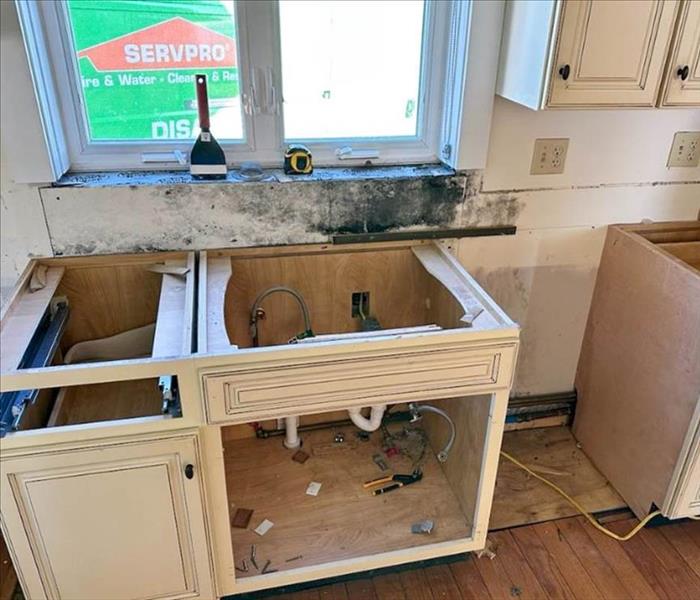 Whether you're planning a minor remodeling project or a full-scale home renovation, it's important to be aware of the potential risks of mold growth.
Whether you're planning a minor remodeling project or a full-scale home renovation, it's important to be aware of the potential risks of mold growth.
Whether you're planning a minor remodeling project or a full-scale home renovation, it's important to be aware of the potential risks of mold growth during the process. In this blog, we will share essential tips to help you achieve a mold-free home renovation while maintaining a healthy indoor environment. Read on to discover how you can safeguard your renovation project from mold-related issues.
1. Start with a Solid Plan
Before embarking on your home renovation, create a well-thought-out plan that considers potential moisture sources and areas prone to mold growth. Identify any existing mold issues and address them before starting the renovation. This proactive approach will minimize the chances of mold spreading during the construction process.
2. Maintain Proper Moisture Control
Moisture is the main contributor to mold growth. During your renovation, it's essential to control moisture levels to prevent mold from developing. Here are a few measures you can take:
Ensure Proper Ventilation: Properly ventilate high-moisture areas like kitchens, bathrooms, and laundry rooms by installing exhaust fans. Proper airflow helps reduce excessive moisture accumulation.
Utilize Dehumidifiers: In spaces where humidity can be a challenge, such as basements or crawl spaces, consider using dehumidifiers to maintain an optimal moisture level.
Control Water Intrusion: Protect your renovation site from water intrusion by addressing any leaks, properly sealing windows and doors, and ensuring proper drainage around the property.
3. Monitor Humidity Levels
Keeping a close eye on humidity levels within your home is crucial during a renovation. High humidity levels create a favorable environment for mold growth. Consider using hygrometers to monitor humidity and maintain levels below 60%. This simple tool can help you detect and address any moisture issues before they escalate.
4. Properly Dry Materials and Surfaces
During the renovation process, it's common for construction materials and surfaces to become wet due to plumbing work, moisture from building materials, or accidental spills. Ensure that all wet surfaces and materials are thoroughly dried before proceeding with the renovation. This will prevent mold from thriving and spreading.
5. Professional Mold Remediation
If, despite your best efforts, you discover mold during the renovation, it's crucial to address it promptly. Contact a professional mold remediation service like SERVPRO® of The Seacoast to ensure proper containment, removal, and remediation. Our experts will employ specialized equipment and techniques to effectively eliminate mold from your property, providing a clean and healthy environment for your renovation project.
A mold-free home renovation is essential to maintaining a healthy indoor environment in your New Hampshire property. By following these tips and being vigilant during the renovation process, you can significantly minimize the risk of mold growth. Remember, if you encounter mold issues, it's best to seek professional assistance to ensure a thorough and safe remediation process. Contact SERVPRO® of The Seacoast for trusted mold remediation services. Enjoy your renovation journey while keeping mold at bay!
Expert Cleaning Tips for Water-Damaged Upholstery
10/14/2023 (Permalink)
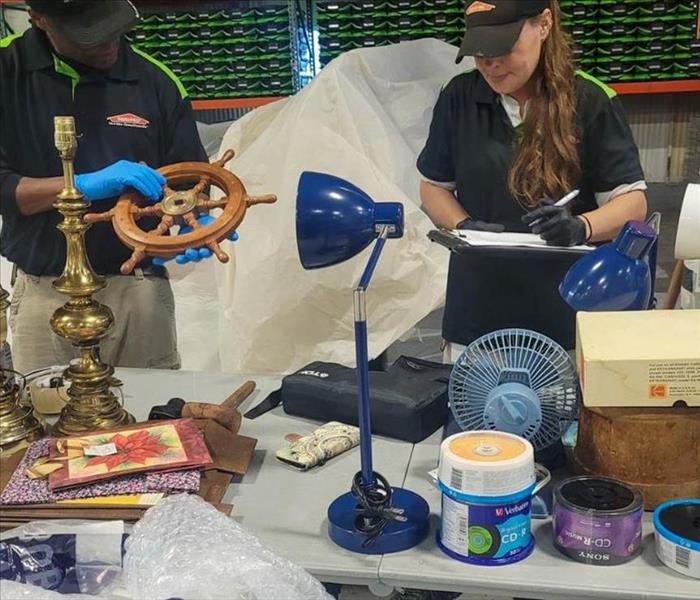 it's essential to address the damage quickly to prevent permanent damage and ensure the safety and longevity of your furniture.
it's essential to address the damage quickly to prevent permanent damage and ensure the safety and longevity of your furniture.
Water-damaged upholstery can be a significant headache for homeowners. Whether it's from a leaky roof or a plumbing issue, water damage can leave your furniture sopping wet, dirty, and even foul-smelling. However, it's essential to address the damage quickly to prevent permanent damage and ensure the safety and longevity of your furniture.
In this post, we will share expert tips on how to clean water-damaged upholstery for safety and longevity. Follow these techniques to restore your upholstery to its pre-damaged condition and maintain its lifespan.
Assessing the Damage
Before starting the cleaning process, it is essential to evaluate the extent of the damage and identify potential issues.
- Take an inventory of the affected furniture, making a note of the material, age, and condition.
- Look for signs of mold growth, as damp upholstery is an ideal environment for mold to grow.
- Check for any signs of structural damage or instability, such as softened, warped, or broken wood frames.
- Once you have assessed the damage, you'll have a better idea of how to proceed with the cleaning process.
Cleaning Methods
Cleaning water-damaged upholstery requires careful attention to detail and particular cleaning techniques. Here are some tips to get you started:
- Removing Excess Water
The first step is to remove any water from the upholstery to prevent further damage. Here's how to do it:
- Use a wet-dry vacuum to extract large amounts of water.
- Place a clean, dry towel over the affected area and press down to absorb as much water as possible.
- Do not use any heat sources such as hairdryers, as this can cause shrinking and damage to the upholstery.
- Cleaning Solutions
Different types of upholstery require different types of cleaning solutions. Here are some tips to help you choose the right cleaning solution:
- For natural fabric upholstery, mix equal parts white vinegar and distilled water. Pour the solution into a spray bottle and shake well before use.
- For leather, mix a mild soap with distilled water. Avoid using solvents or harsh chemicals as they can cause permanent damage.
- For synthetic fabrics, refer to the manufacturer's instructions, as some types of fabric require specific cleaning products.
- Spot Cleaning
Once you have the right cleaning solution, it's time to spot-clean any stains or marks on the upholstery. Here's what to do:
- Spray the cleaning solution on the affected area.
- Use a clean, white towel to blot the spot, starting from the outside and working your way inwards.
- Do not rub the stain as this can spread it.
- Deep Cleaning
After spot cleaning, it's time to deep clean the upholstery. Here's what to do:
- Spray the cleaning solution over the entire piece of furniture, including the cushions, armrests, and backrest.
- Use a soft-bristled brush to work the solution into the fabric, focusing on dirtier areas.
- Allow the furniture to air-dry thoroughly. Do not use a heater or fan as this can cause shrinkage or damage.
Drying Techniques
Drying your water-damaged upholstery properly is crucial to prevent further damage and mold growth. Here's what to do:
- Ensure the furniture is in a well-ventilated area with good air circulation.
- Use fans or dehumidifiers to speed up the drying process.
- If the furniture is not drying properly, consider hiring a professional who can use specialized drying equipment.
Safety Precautions
Cleaning water-damaged upholstery requires extra precautions to ensure safety. Here are some safety measures to keep in mind:
- Wear protective gear such as gloves, eye goggles, and face masks to avoid mold spores or chemicals from getting into your eyes or lungs.
- Avoid mixing cleaning chemicals as they can cause dangerous fumes.
- Keep children and pets away from the affected area until it is completely dry and safe.
Professional Cleaning Services
If the water damage is extensive or you are not confident in cleaning the furniture yourself, consider hiring professional upholstery cleaning services, such as our SERVPRO® of The Seacoast team. Our team of professionals has specialized equipment and training to clean furniture that has been damaged by water or mold safely.
Water-damaged upholstery can be a significant headache for homeowners, but it doesn't have to be. With the right cleaning techniques and maintenance tips, you can restore your furniture to its original condition and ensure its longevity. Follow these expert tips for safety and longevity, and enjoy your furniture for years to come.
Emergency Communication: Setting Up a Family Communication Plan
9/7/2023 (Permalink)
During times of emergency, effective communication is vital for the safety and well-being of your family. Whether it's a natural disaster, a medical emergency, or any other unexpected event, having a well-established family communication plan is essential. In this blog post, we will guide you through the process of setting up a family communication plan to ensure that everyone stays connected and informed during emergencies.
Create a Contact List
Start by creating a comprehensive contact list for all family members. Include their full names, phone numbers, and any relevant medical information or allergies. Additionally, include the contact information for emergency services and any out-of-town relatives or friends who can assist in case of regional disasters.
Choose a Primary and Secondary Meeting Place
Identify a primary meeting place where your family can gather in case of an emergency near your home, such as a designated room or a specific spot outside. This location should be easily accessible and safe. In addition, choose a secondary meeting place, preferably outside your immediate neighborhood, in case you cannot reach the primary meeting place.
Establish Communication Channels
Determine the communication channels you will use during emergencies. This can include phone calls, text messages, social media, or email. Take into account that during large-scale emergencies, network congestion might make it difficult to rely solely on phone calls.
Assign specific roles and responsibilities to each family member. For example, designate one person as the emergency contact who will be responsible for communicating with relatives and updating them on your family's status. Assign someone to be in charge of gathering emergency supplies, and another person to be in charge of pets or small children.
Practice and Rehearse
Regularly practice and rehearse your family communication plan to ensure that everyone is familiar with it. Conduct drills or simulations to test its effectiveness. This will help identify any weaknesses or areas that need improvement.
Keep up-to-date with emergency alerts and warnings through local news channels, radio, or official emergency management websites. Many communities offer notification systems that send alerts directly to your phone, so sign up for those services.
Secure Important Documents
Make copies of important documents, such as identification cards, passports, insurance policies, and medical records. Store them in a secure location, either in a fireproof and waterproof safe or on a cloud-based storage system. This ensures that you can quickly access these essential documents in case of an emergency.
Periodically review and update your family communication plan. Regularly update contact information, revise meeting places if needed, and adjust responsibilities as necessary. It's crucial to keep this plan relevant and up-to-date.
Having a well-thought-out family communication plan is a proactive way to ensure that everyone stays connected and informed during times of emergency. By creating a contact list, establishing meeting places, choosing communication channels, and regularly reviewing and updating the plan, you are taking important steps to protect and care for your family during challenging times. Remember, effective communication is key, so invest the time and effort to establish a comprehensive family communication plan—it may make all the difference when it matters most.
Common Issues Uncovered During Fire Sprinkler System Maintenance and How to Address Them
8/19/2023 (Permalink)
Fire sprinkler systems are a critical line of defense against fires, providing valuable protection for homes and properties. To ensure these systems function reliably when needed, regular maintenance is essential. During routine inspections, professional technicians often uncover common issues that, if left unaddressed, could compromise the system's effectiveness. In this blog, we will explore these common issues in more depth and provide helpful guidance on how home and property owners can address them to maintain the optimal performance of their fire sprinkler systems.
Corrosion and Rust Buildup
Corrosion and rust buildup are common issues in fire sprinkler systems, particularly in older properties or those exposed to harsh environmental conditions. Corroded pipes and sprinkler heads can hinder water flow and reduce the system's overall efficiency. The presence of rust can also contaminate the water supply, making it less effective in fighting fires.
Addressing the Issue:
To combat corrosion and rust buildup, property owners should prioritize using corrosion-resistant materials for replacement pipes and sprinkler heads. Regular pipe flushing is also essential to remove sediment and minimize the risk of rust accumulation. Engaging professional technicians who have experience in dealing with corrosion-related issues will ensure the proper assessment and repair of affected components.
Obstructed Sprinkler Heads
Over time, sprinkler heads can accumulate dust, dirt, or debris, leading to blockages that compromise their functionality during a fire emergency. Obstructed sprinkler heads may not distribute water evenly, leaving certain areas inadequately protected.
Addressing the Issue:
Property owners should schedule routine inspections and cleaning of sprinkler heads to ensure they remain clear of any obstructions. Technicians can use specialized tools and techniques to remove debris without causing damage. In environments prone to dust or debris accumulation, installing protective covers on sprinkler heads can help maintain their effectiveness.
Leaks or Damaged Pipe Joints
Leaking pipes or damaged joints can cause water wastage and reduce the water pressure within the fire sprinkler system. This decrease in water pressure compromises the system's ability to effectively suppress fires.
Addressing the Issue:
Inspections should include a thorough check of pipe joints for signs of leakage or damage. Prompt repair or replacement of any damaged sections is vital to prevent further deterioration. Utilizing pipe sealants or joint compounds can also be beneficial in preventing leaks from occurring.
Inadequate Water Pressure
Insufficient water pressure within the fire sprinkler system can hinder its ability to provide adequate coverage during a fire event. Low water pressure may result from various factors, including water supply issues or clogged pipes.
Addressing the Issue:
Regularly testing water pressure is critical to ensure it meets the manufacturer's specifications. Property owners should collaborate with certified professionals to evaluate the water supply and recommend suitable solutions to address any water pressure issues. Installing pressure-regulating devices can also help maintain consistent water pressure within the system.
Improperly Positioned Sprinkler Heads
Misaligned or improperly positioned sprinkler heads can lead to uneven water distribution, leaving certain areas vulnerable to fire damage.
Addressing the Issue:
Property owners should conduct visual inspections to verify that all sprinkler heads are properly positioned and oriented correctly. If any misalignments are detected, immediate corrective action should be taken. Technicians can reposition or realign sprinkler heads as needed, ensuring comprehensive coverage and maximum effectiveness.
Blocked Fire Sprinkler System Control Valves
The control valves are crucial components of fire sprinkler systems, responsible for activating the system in response to a fire. Blockages or malfunctions in these valves can prevent the system from functioning as intended during emergencies.
Addressing the Issue:
Regular inspections and testing of control valves are vital to identify potential blockages or malfunctions. Technicians can clean and lubricate control valves following the manufacturer's guidelines to prevent issues and ensure smooth operation. Property owners should also maintain clear access to control valve areas, ensuring that they are readily accessible for inspection and maintenance.
Taking care of a fire sprinkler system through regular maintenance is a responsibility that should not be overlooked. By understanding the common issues uncovered during maintenance inspections and knowing how to address them proactively, home and property owners can keep their fire sprinkler systems in top-notch condition. Engaging the services of certified professionals for inspections and repairs ensures that any detected issues are promptly and effectively addressed, providing peace of mind and enhanced fire protection for their properties and loved ones. Remember, the reliability of your fire sprinkler system is crucial, as it can be the difference between a contained fire incident and a devastating disaster.
Tips for Handling Commercial Water Damage in a Portsmouth Senior Living Facility
5/23/2023 (Permalink)
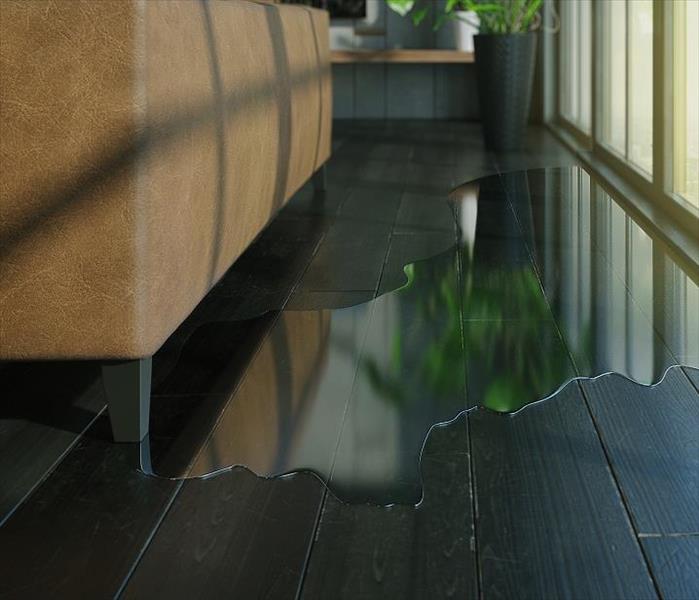 Structural damage is likely if the water intrusion extends to the walls and baseboards. Call SERVPRO for fast, effective remediation.
Structural damage is likely if the water intrusion extends to the walls and baseboards. Call SERVPRO for fast, effective remediation.
Hire SERVPRO for Commercial Water Damage Repair in Portsmouth
Moisture is among the most destructive forces in a building. Water intrusion can be particularly harmful in senior living facilities. Apart from the repair costs, waterlogged materials can present mold issues that must be safely managed. The facility’s operations can also halt.
Structural damage is likely if the water intrusion extends to the walls and baseboards. You need experts to repair commercial water damage in your Portsmouth senior living facility. SERVPRO can respond shortly after your call. Upon arrival, our technicians can create a digital map for your property.
Walking through the facility, we can mark the map to indicate the areas with damp building materials. This process offers a clear image of the affected areas. Using moisture meters for precise results, we can measure the moisture levels of all impacted surfaces like baseboards, subfloors, cabinets, furniture, ceilings, and walls. The other steps SERVPRO can take to restore your facility include the following:
- Water extraction
- Drying and dehumidification
- Restoring contents
- Repairing or replacing damaged materials.
SERVPRO’s team is trained and certified in water damage repair. Our team can use electric submersible pumps to extract water from the affected areas. We can use air-moving and dehumidification tools to dry the property. Our technicians can also inventory, pack and take damaged items like fabrics and furniture to our facilities to clean, deodorize and restore them until restoration work at your facility is complete.
We can repair or replace some building materials if they are severely damaged. When doing so, our SERVPRO team can set up containments for worker and occupant safety. The degree of containment can vary based on the regulations that apply to your facility and the safety of the residents. At a minimum, we can use a barrier to separate work areas to prevent debris and dust from entering non-work areas. We may also create negative air pressure within containment areas to prevent air from blowing out of the work area.
As you create your emergency response plan after commercial water damage, keep SERVPRO of The Seacoast, SERVPRO of Dover-Rochester, and SERVPRO of Durham in mind. Call us at (603) 433-4300.






 24/7 Emergency Service
24/7 Emergency Service




